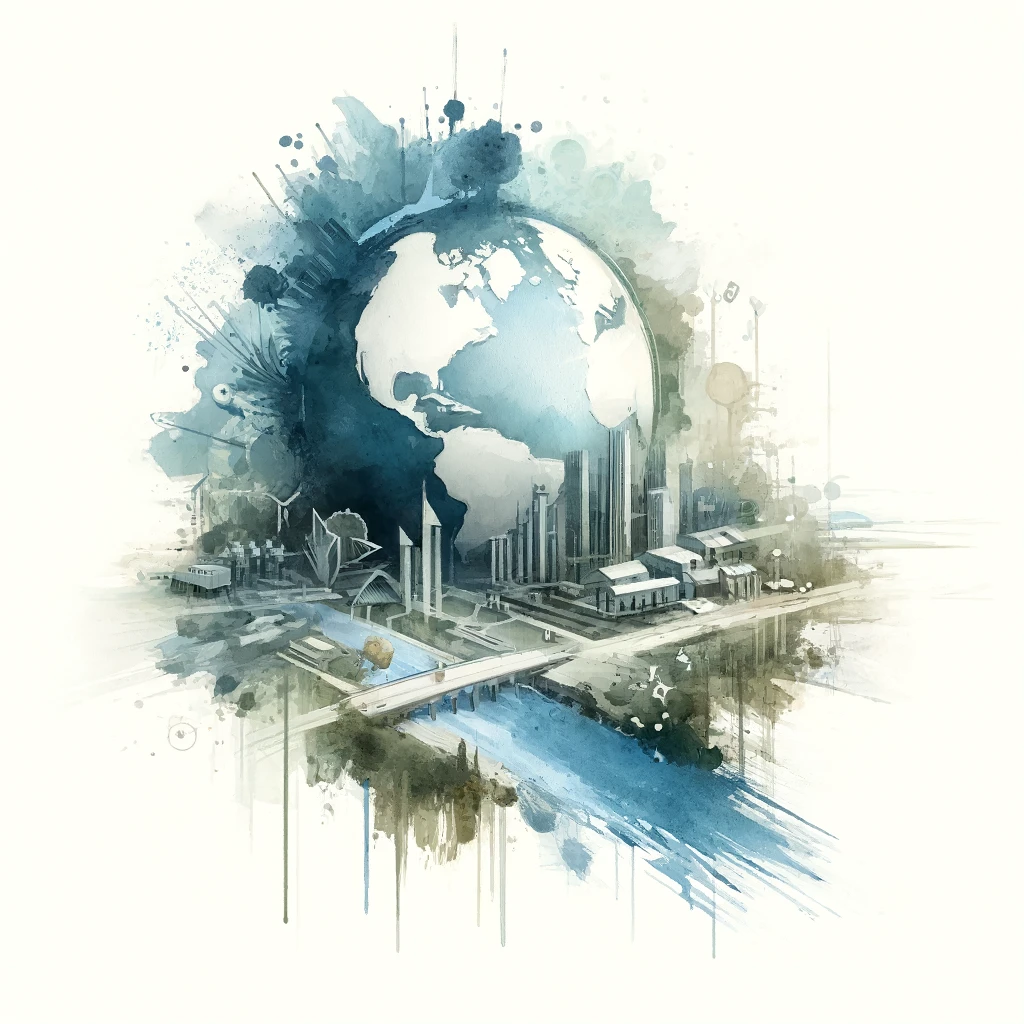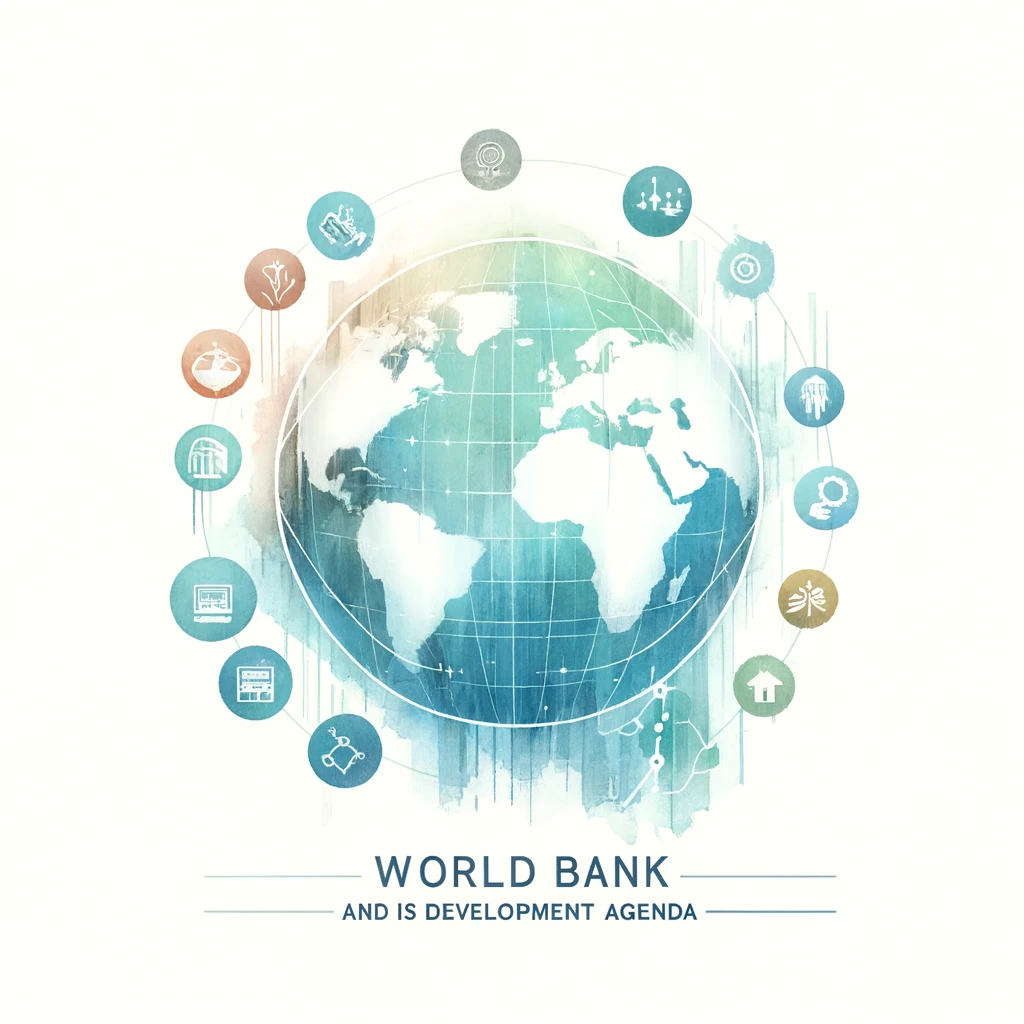Its development agenda plays an important role for the facilitation of development across different regions in an attempt to enhance global economic growth and eradicate poverty. Originating in 1944, it would financially and technically support the developing countries. Its goal is to help develop infrastructure, improve education, healthcare, and governance systems, which would spur sustainable development. It makes long-term investments and policy support to build resilience, supporting the most vulnerable in society. Some of the main focus areas under the World Bank and Its Development Agenda include
- Support of infrastructural projects in developing countries to upgrade transportation, energy, and communication networks.
- She advocates promoting education and healthcare initiatives as a means of bringing the general quality of life to areas where it is unaddressed.
- Financing such environmental sustainability projects to combat the causes of climate change and facilitate green growth strategies.
Origin
The institution was formed way back in 1944 through a conference held at Bretton Woods, USA, after World War II. At the beginning, it was called the International Bank for Reconstruction and Development, IBRD, and the first project or the loan it made was to borrow money to give to France to rebuild after the war. In time, it expanded its role in aiding countries around the globe fight poverty and cultivate development.
Today, the World Bank is formed by five institutions that collaborate to provide financial and technical assistance to more than 170 countries. The institutions aid in projects such as infrastructural building, educational advancement, health care, and sustainable development.

Functions and Objectives of the World Bank
The World Bank operates with a clear mandate to provide financial and technical support to developing nations. Its primary functions include:
- Providing Financial and Technical Support: The World Bank lends and grants money to projects and programs that would help improve the economic prospects and quality of life of developing countries. This assistance, which is often supplemented with technical expertise and policy advice, can enable countries to execute projects and reforms appropriately.
- Focus on Poverty Reduction and Development: Actually, the main goal of the World Bank is to reduce poverty through sustainable development. In this framework, financing projects on education, health, public administration, infrastructure, and financial systems come into consideration.
- Partnerships with Countries and Organizations: In assistance to increase the impact and the sustainability of its projects, the World Bank cooperates with governments, international organizations, and private sector entities. Here, partnerships are crucial for pooling resources, sharing knowledge, and striving toward common development goals.
Key Initiatives and Programs
The World Bank undertakes numerous initiatives and programs to address global development challenges:
- Infrastructure Development and Financing: Infrastructure projects, such as the construction of roads, bridges, and energy facilities, represent a core focus of the World Bank’s agenda. The projects are geared toward enhancing connectivity, stimulating economic growth, and raising employment.
- Health, Education, and Social Sector Investments: The Bank invests in health and education to build human capital. Programs aim to improve access to quality healthcare, enhance educational outcomes, and support social protection systems to reduce vulnerability.
- Climate Change and Sustainable Development Initiatives: The World Bank prioritizes climate action and sustainable development through programs that promote renewable energy, sustainable agriculture, and disaster resilience. These initiatives help countries adapt to and mitigate the impacts of climate change while pursuing sustainable growth paths .

Criticisms and Challenges
Despite its positive impact, the World Bank faces several criticisms and challenges:
- Concerns about Governance and Accountability: Critics argue that the World Bank’s governance structure lacks adequate representation from developing countries. This imbalance can affect the institution’s decision-making and prioritization processes.
- Impact of Conditionality on Borrowing Countries: The conditions attached to World Bank loans, often requiring structural adjustments and economic reforms, can sometimes lead to adverse social and economic consequences for borrowing countries. These conditions may include austerity measures that can strain public services and social safety nets.
- Balancing Development Goals with Economic Growth: The World Bank must constantly balance its development goals with the need for economic growth. This involves ensuring that its projects promote inclusive growth that benefits all segments of society, particularly the poorest and most vulnerable .
Reforms and Future Directions
The World Bank is continually evolving to address new challenges and enhance its effectiveness:
- Enhancing Transparency and Stakeholder Engagement: To improve governance and accountability, the World Bank is focusing on increasing transparency and engaging more effectively with stakeholders, including civil society organizations and local communities.
- Focus on Inclusive and Sustainable Development: The Bank is shifting its emphasis towards projects that promote inclusive development, ensuring that the benefits of growth are widely shared. This includes targeting investments in underserved regions and populations.
- Adapting to New Global Challenges and Priorities: The World Bank is adapting its strategies to address emerging global issues such as digitalization, global health threats, and climate change. This involves innovative financing mechanisms and leveraging technology to enhance development outcomes .
Impact of World Bank Projects
The impact of World Bank projects can be seen through various case studies and success stories:
- Case Studies in Infrastructure and Social Sectors: Projects such as the construction of the Jamuna Bridge in Bangladesh and the Lesotho Highlands Water Project illustrate the World Bank’s role in fostering infrastructure development that drives economic growth and regional integration.
- Successes and Lessons Learned from Past Projects: Successful health and education initiatives, such as the eradication of river blindness in Africa and the improvement of primary education in India, highlight the positive outcomes of World Bank investments. These projects provide valuable lessons for future interventions.
- Future Role in Global Development Agenda: As the World Bank continues to adapt to new challenges, its role in the global development agenda remains critical. By focusing on sustainability, inclusivity, and innovation, the World Bank aims to support countries in achieving the Sustainable Development Goals (SDGs) and fostering resilient economies.
Conclusion
In summary, the World Bank’s development agenda is comprehensive, addressing a wide range of issues to promote sustainable development and reduce poverty. While facing criticisms and challenges, the institution’s ongoing reforms and future directions aim to enhance its impact and effectiveness in the ever-evolving global development landscape.


